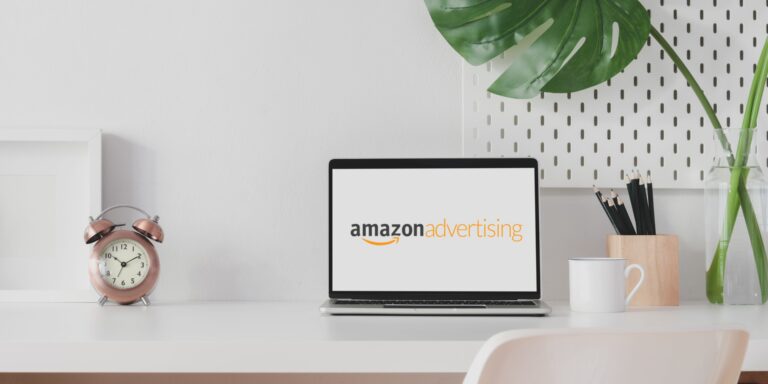Common Amazon Ads Mistakes

It’s no secret that Amazon is a go-to ecommerce platform for both buyers and sellers. This is simply down to the notoriety and trust that the platform has built with it’s consumer base and also the intent users have when they go to the platform.
If you’re listing a product or product(s) on Amazon, you are likely already running ads. Or you may be trying to work Amazon advertising into your next marketing strategy. Either way you probably want to make sure that your campaigns are as profitable as possible. Amazon ads mistakes are expensive, therefore, avoidance where possible is vital. To get off to the best start possible, make sure you are not making these common Amazon Ads mistakes!
Keyword Dumping
Within Amazon, you have campaigns, these campaigns contain adgroups and these adgroups can target keywords. Keywords are terms that you want your ads to appear for when a user searches them.
Effective allocation of these keywords is often overlooked but is incredibly important. Often advertisers make the mistake of targeting a large number of varied keywords within a single adgroup. This not only makes optimization harder in the long run and less beneficial, it also affects the relevance of your ads to your targeted terms. Low ad relevance can negatively impact your click-through rate. It also gives you less control over your budget, limiting your flexibility of applying your budget share in a way that optimizes your spend to produce more profitable campaigns and scale your business.
Avoid keyword dumping by splitting out your targeting into separate campaigns/adgroups based on a combination of product type, competition, demand and conversion rate/ROAS (this last option is for those already running Amazon ads). This will allow you to cater your ads accordingly, not only contributing to higher click-through rates but also contributing towards higher chances of conversion generation.
Targeting The Wrong Match Types With A Limited Budget/Brand Presence
Like other ad platforms, not only can you target keywords via Amazon, you can also target match types. Match types help determine how broad or restricting your targeting is. Need some help on what these are?
Have no fear, that’s what we’re here for!
Broad Match– Broad match gets you the most coverage and reach within your targeting, but this does mean you sacrifice the relevance of your targeting in conjunction with the users query. Let’s say you are targeting the term “floral tea sets” as broad match, terms like:
“Antique tea sets”
“Afternoon tea”
“Floral teas”
Could trigger your ad to appear for the users query.
Phrase Match– Phrase match is slightly more restrictive than broad but allows your ads to trigger for more relevant terms.
Examples of terms that would trigger your ads with phrase match are:
“Buy floral tea sets online”
“DIY floral tea sets”
“Antique floral tea sets”
Exact Match– This is the most restrictive match type but does mean your ads display for the most relevant terms. When an advertiser uses exact match, it means your ads won’t trigger for any queries outside of your targeted exact match keywords.
A frequent mistake made among new advertisers is not having an understanding of match types and what they do. This leads to the implementation of a bunch of keywords, all of which being broad match. Whilst this may not be a problem if you have the backing of a large budget and huge brand presence, this approach often means advertisers waste a lot of money and generate a lot of irrelevant clicks and impressions.
When advertising on any PPC platform, really take the time to understand and test match types, taking a more targeted approach initially and building on this.
Not Adding Negative Keywords
Alongside adding keywords that you want to target within your campaigns, you can also add keywords that you want to completely avoid targeting, these are called negative keywords. The implementation of negative keywords prevents your ads from appearing for irrelevant queries and wasting money on low quality clicks.
Not Optimising Your Listing

Listing quality is an important aspect in Amazon advertising, it can help improve the reach of your products, the positioning of your listing and what you’d be paying for a click. Therefore, it must not be ignored!
You can start improving your listing quality by taking the following steps:
- Ensure your title is keyword relevant, without keyword stuffing. Keyword stuffing is when you overwhelm your title with too many keywords.
- Use high quality images (at least 5) in all of your listings, showing your product at different angles in varied environments.
- Encourage positive reviews on your listings. This is not only looked at positively by Amazon, it also has a positive impact on the user’s journey. Building their trust and increasing the chance of convincing them to purchase.
Not Testing and Optimising Your Campaigns

You can’t discover what works without testing and without optimization. Testing allows you to narrow in on the best approach for your campaigns and makes it easier to determine the direction you need to move forwards with to really scale your brand.
Ongoing optimization allows you to figure out what’s going right, what’s going wrong and how you can improve. Far to often advertisers make the mistake of leaving an ad campaign unmonitored with little to no improvements made and let me tell you, it can be costly!
@misspinkdigital Mistakes to avoid when running your Amazon Ads campaigns 🙅♀️ #amazonads #payperclick #digitalmarketing #digitalmarketingtips #passiveincome ♬ Lo-fi hip hop - NAO-K


